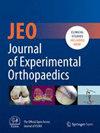A non-interventional study to evaluate the safety and effectiveness of a biphasic, chondrocyte-containing biomaterial (NOVOCART® 3D) in the treatment of localized full-thickness cartilage defects or osteochondral lesions of the knee joint (NISANIK)
Abstract
Purpose
The focus of this study was to evaluate the safety and efficacy of NOVOCART® 3D-treatment over a period of 36 months post-transplantation.
Methods
This study was designed as a prospective, multicenter, single-arm, non-interventional investigation, aimed at evaluating the safety and efficacy of NOVOCART® 3D in patients with localized cartilage defects in the knee joint. 80 patients were enroled across 8 study centres and were followed post-operatively for a duration of 36 months. Safety assessments were conducted throughout the study period, while effectiveness data were evaluated pre-operatively and at 3, 12, 18, 24, and 36 months following cell transplantation, utilizing the International Knee Documentation Committee 2000 score (IKDC 2000).
Results
Over the 3-year observation period among the 80 study patients, the incidence of surgery or product-related adverse events stood at 12.5%. Subjective scores according to IKDC 2000 demonstrated improvement, with a mean change from baseline of 30.5 ± 21.5 score points at 36 months. Similarly, the mean IKDC function score exhibited continuous enhancement, with a mean difference of 3.2 ± 3.0 score points. These changes from baseline were associated with nominally significant p-values from the 12-month mark onwards. The subgroup analysis revealed that only higher baseline scores and concurrent surgeries negatively impacted outcome parameters. Female sex, retro-patellar lesions, uncontained lesions, lesions with intralesional osteophytes or osteochondral defects did not exhibit any significant influence.
Conclusion
The NISANIK study indicates the safety of NOVOCART® 3D treatment. Regarding effectiveness, patients in the study demonstrated a notable and progressively increasing mean improvement compared to their pre-operative condition. The study furthermore demonstrated that NOVOCART® is universally applicable across all age groups and Body Mass Index ranges, and it can also be effectively used in patients with female sex, larger lesions, retro-patellar lesions and in such having received bone-grafting without compromising the outcome, unlike related procedures.
Level of Evidence
Level II, therapeutic, prospective cohort study.





 求助内容:
求助内容: 应助结果提醒方式:
应助结果提醒方式:


